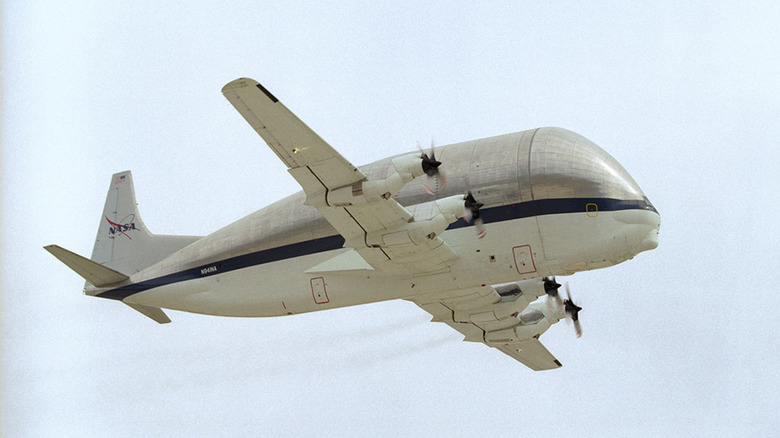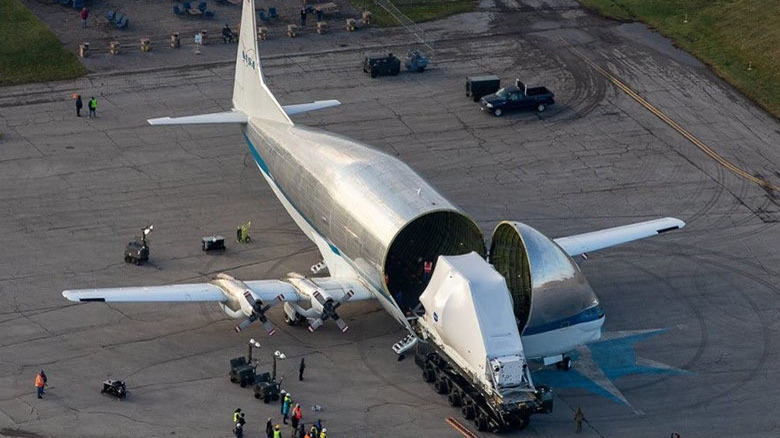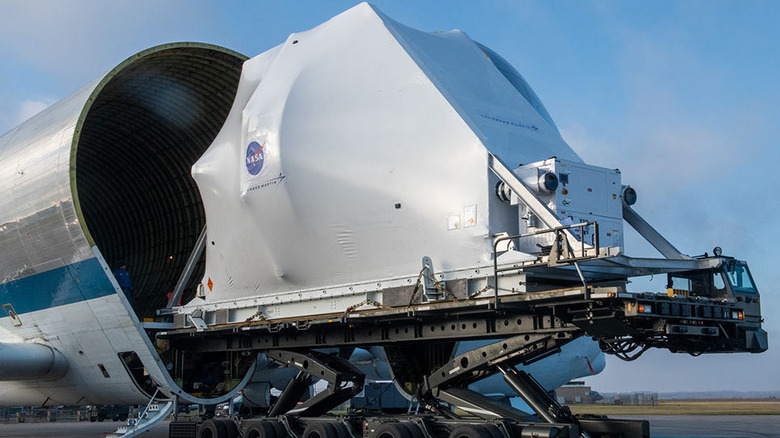This Cargo Plane Looks Strange, But It Serves An Important Purpose
On July 20, 1969, the world watched in awe as the first-ever human footprints were set on the moon. It was a momentous milestone for the United States National Aeronautics and Space Administration (NASA).
But before Neil Armstrong could make his famous giant leap, there were numerous hurdles that NASA engineers and scientists had to jump over. One particularly perplexing issue was logistics. Manufactured rocket parts and other bulky cargo had to go through the tediously long 18 to 25-day travel through the Gulf of Mexico or Panama Canal just to reach the testing center at Cape Kennedy, Florida. While land travel could have been a much faster route, it was more challenging to move such huge cargo through low tunnels and small roadways lined with wires. Air travel was also out of the question as no aircraft was spacious enough to handle the load.
That was until the Guppy plane, developed by the Aero Spaceline Industries (ASI) in California, entered the picture in 1961. The strange-looking plane was able to transport the oversized parts in mere 18 hours. Since then, the Guppy has been an indispensable part of NASA's space exploration efforts.
Evolutions of the weird but efficient plane
The 1961 Guppy plane, referred to as the "Pregnant Guppy," was a design conceived by former U.S. Air Force pilot Jack Conroy. It was essentially a modification of the Boeing Model 377. The cargo bay of the Guppy measured a particularly wide 20-feet in diameter, according to CNN.
Following the successful flight of the first Guppy plane, Conroy's company, ASI, made another a second iteration of the aircraft three years later. It was named the "Super Guppy" as it came with a bigger, 25-meter-diameter compartment and better high-powered engines. Access to the cargo bay was also changed. Instead of disconnecting the tail, the Super Guppy featured a hinged nose for much easier frontal loading.
The last evolution of the Guppy planes is the Super Guppy Turbine (SGT) which was just like the Super Guppy but with upgraded engines (Allison T-56 turboprops). CNN noted that the SGT boasted a slightly bigger cargo floor of 13 feet Aero Spaceline to the Super Guppy's nine feet. Only four SGTs were made, two by Conroy's company and the last two by the aerospace company Airbus.
The Guppies' role in NASA's space programs
The Pregnant Guppy was originally built with one specific purpose in mind: to carry part of the Apollo program's Saturn rocket. NASA went on to use the Super Guppy up until its retirement in 1997, logging a total of more than 3 million miles. In three decades, the Super Guppy plane helped ferry crucial rocket components for a wide variety of space programs, including the Gemini and Apollo programs that sent humans to space, the Skylab that serves as the first station of the US, and the International Space Station (ISS) that houses six crews in space.
In 1997, NASA took possession of the newest of the Airbus-developed Super Guppy Turbines. The SGT remains in use today and logged more than a hundred flight hours in 2019. It was used for transporting parts of the International Space Station and the new exploration spacecraft, Orion.


